Observatories
Moshiri Observatory

Ionospheric and Magnetospheric Environment Observations
Low-latitude auroras associated with great magnetic storms have been successfully observed by optical instruments (high-sensitivity all-sky camera and scanning/fixed-type photometers). Geomagnetic variations are measured by using fluxgate and induction magnetometers. ELF/VLF radio wave emissions generated by lightening and in the Earth's magnetosphere are also recorded routinely using a 43m loop-antenna. These data are opened to the scientific community for better understanding of the ionospheric and magnetospheric environment and for monitoring 'Space Weather.'
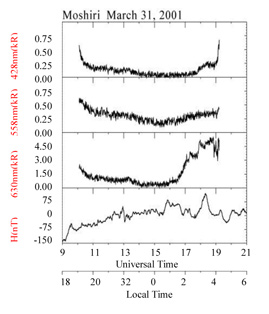
Low-latitude aurora observed during a magnetic storm.
Atmospheric Environment Observations
Stratospheric ozone and the species related to the ozone depletion as well as green house gases (GHGs) such as carbon dioxide and methane were measured by using a high-resolution Fourier Transform Infrared spectrometer (FTIR) for better understandings of their temporal variations and mechanism of the ozone depletion and global warming. In addition, measurements of stratospheric NO2 and ozone column densities are also made with a UV/Visible spectrometer. These observations had been carried out as a part of the Network for the Detection of Atmospheric Composition Change (NDACC), and the GHG's data were provided to a global network of CO2 observation (Total Carbon Column Observing Network: TCCON) and the GOSAT satellite validation program as a validation data. These measurements of atmospheric environment were terminated in FY2017.
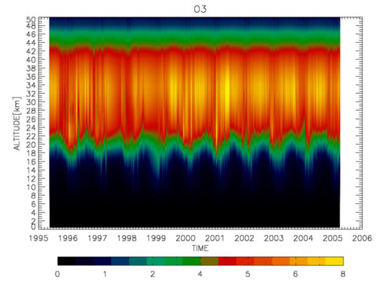
Time-height section of the variations of stratospheric ozone measured with the Moshiri and Rikubetsu FTIRs
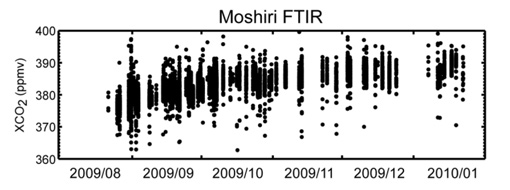
Time series of XCO2 measured with the Moshiri FTIR analyzed by ISEE and the National Institute for Environmental Studies (NIES).
Rikubetsu Observatory
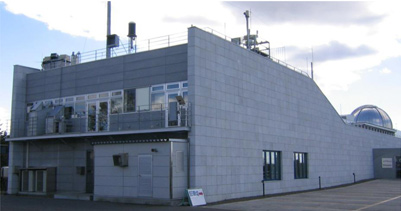
Rikubetsu Observatory (in Rikubetsu Space and Earth Science Museum, in eastern Hokkaido) enjoys many clear-sky days and is free from local air pollution. Two major research projects are carried out in this observatory. One is a continuous monitoring of stratospheric ozone and related species, based on infrared and optical spectroscopic observations. The other is a study of mid-latitude auroral activity during major geomagnetic storms by means of the high sensitivity all-sky CCD camera, scanning spectrometers, magnetometers and HF radar. ISEE collaborates on the studies of stratosphere with the National Institute for Environmental Studies (NIES), which sponsors various instruments such as a millimeter-wave radiometer in the same observing room. Rikubetsu Observatory is playing a key role in international collaborative programs such as the Network for the Detection of Atmospheric Composition Change (NDACC).

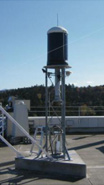
The Fourier Transform Infrared spectrometer (FTIR, left) and the Sun tracker (right) that feeds sunlight into the spectrometer. Density and vertical distribution of minor constituents in the atmosphere can be retrieved from absorption spectra against background sunlight. Spectral data are obtained every 30 minutes at a world-class resolution of 0.0035 cm-1.
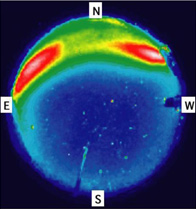
Low-altitude aurora detected with the high-sensitivity all-sky camera at Rikubetsu Observatory. This is a false-color intensity map of the red auroral light at wavelength 630 nm emitted by oxygen atoms.

A time series of ozone mixing ratio at various altitudes (lower panel). The ozone density at 22 km and 30 km decreased when a polar vortex (indicated by the hatched area) passed over Rikubetsu Observatory. The upper panels show distributions of polar vortices around the North Pole. This work has been performed in collaboration with the National Institute for Environmental Studies (NIES).

Intense westward ionospheric plasma flow above Far-East Russia observed by the HF radar. The radar can cover wide horizontal area to monitor the structure and dynamics of the ionosphere.
Fuji Observatory and Solar Wind Observatories
Three stations at Fuji, Toyokawa and Kiso construct three-antenna system, which is fully dedicated to ground-based solar wind observations. The routine-based solar wind observations have been carried out using the interplanetary scintillation method.

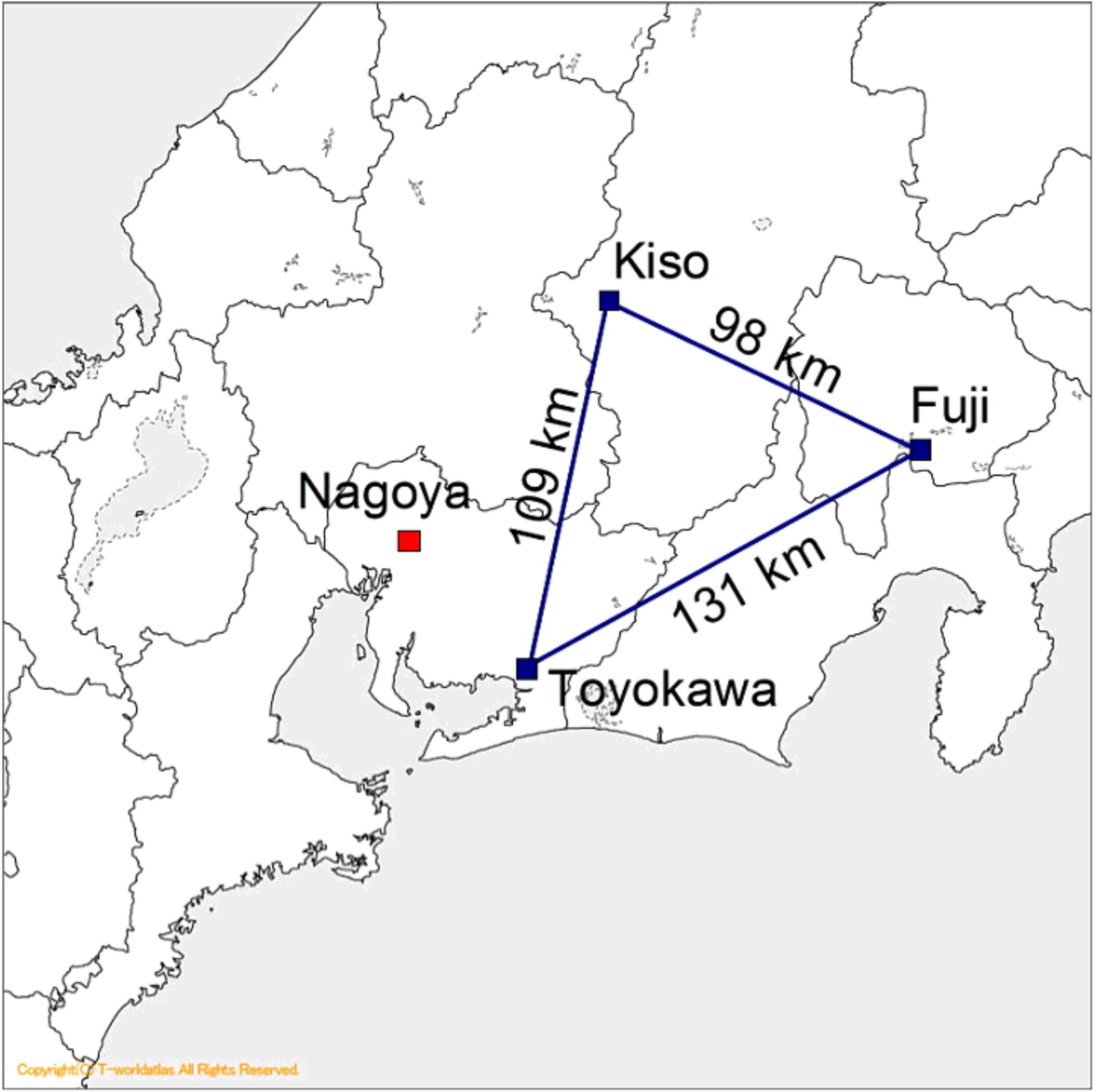
Cylindrical parabolic antenna at Fuji observatory. The antenna consists of five parabolic frames placed in east-west direction, with stainless wires stretched through the frame to make a 2000 m2 reflector. Each station is fully automated and remotely controlled from Nagoya.
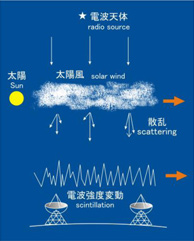
Radio waves from a compact radio source are scattered by electron density irregularities in solar wind, and the scattered radio waves interfere with each other as they propagate to the earth, producing diffraction patterns on an observer's plane. This phenomenon is called interplanetary scintillation (IPS). IPS measurements with widely separated antennas can obtain solar wind velocity and density fluctuation level.
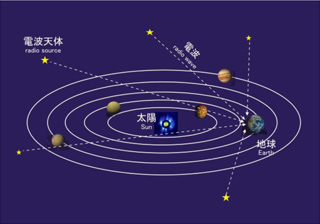
The IPS observations have several advantages over spacecraft measurements. They can be used consistently for a long-term study of the solar cycle dependence of the solar wind structure. In addition, since a large number of IPS sources are available, vast regions of interplanetary space can be probed in a relatively short time.
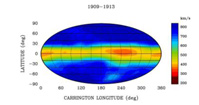
Solar wind velocity distribution in Carrington longitude and heliographic latitude. Computer assisted tomographic analysis was applied to derive this map from the IPS observations.
Kagoshima Observatory
Kagoshima Observatory is located in southern Kyushu, near Sakurajima volcano. Routine observations for the study of Earth's ionospheric, upper atmospheric, and electromagnetic environment are being carried out by using ELF/VLF receivers, magnetometers, and all-sky cameras in collaboration with other universities.

Kagoshima Observatory near Sakurajima volcano.

ELF/VLF antennas and geomagnetic observation hut.

All-sky CCD camera (lower right), fish-eye lens (upper right) for the camera, and observation hut (left). The camera can automatically observe nightglow from various atoms and molecules at altitudes 80-100 km and 200-300 km in the upper atmosphere.

Wavy structures with scales of 15-20 km at altitude 95 km, as detected with a 557.7 nm all-sky camera at Sata.
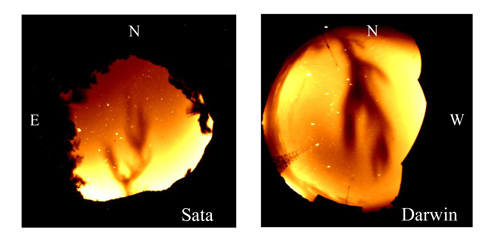
Giant plasma bubbles (dark regions) in the ionosphere observed simultaneously with 630 nm all-sky cameras at Sata (Kagoshima prefecture) and Darwin (Australian geomagnetic conjugate point of Sata). The apex altitude of the bubbles is about 1700 km over the geomagnetic equator.

